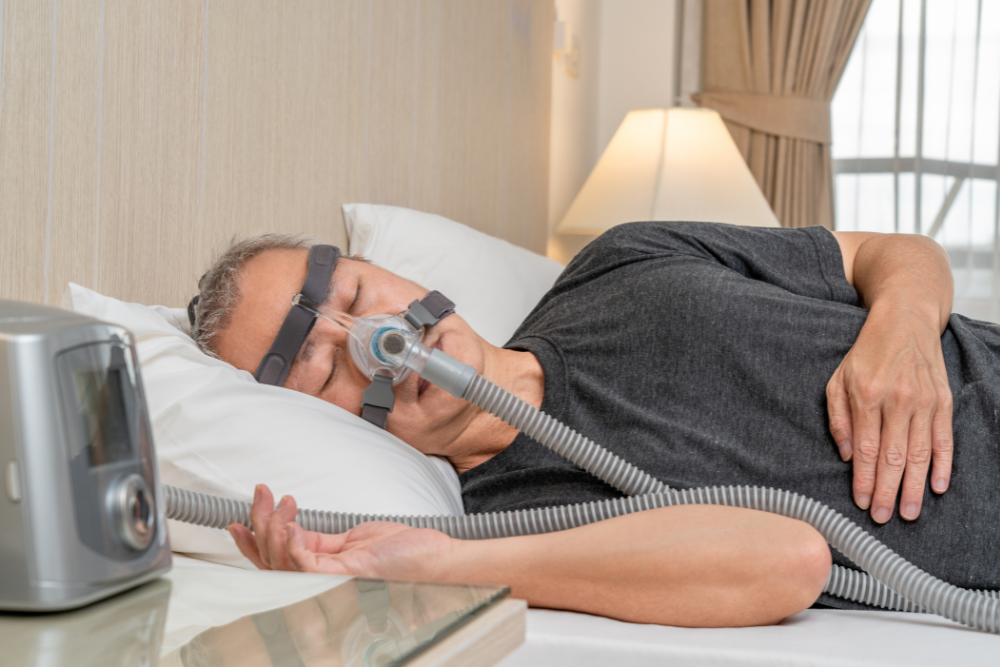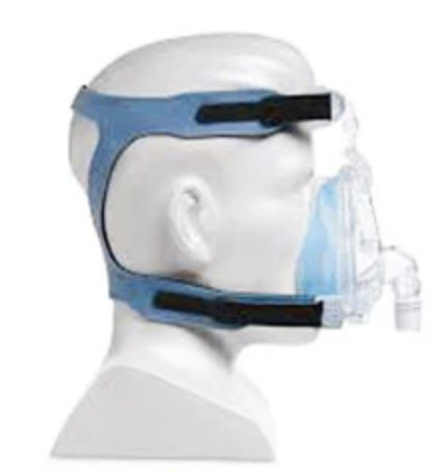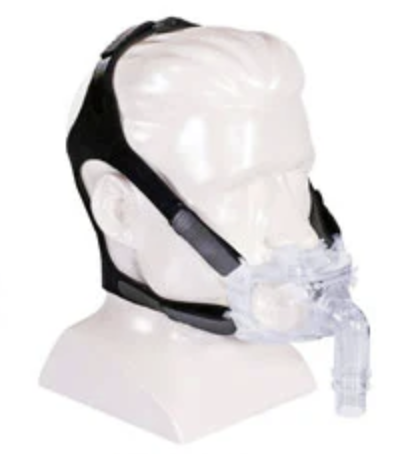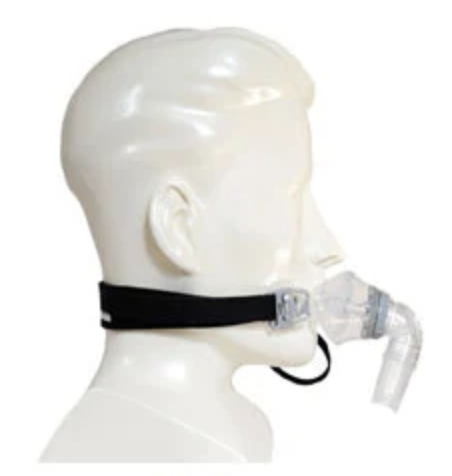If you’ve recently been recommended to use a CPAP (Continuous Positive Airway Pressure) machine or are considering this therapy, you’re in the right place. This article will cover everything you need to know-from setting up the CPAP machine, to choosing the right mask, to taking proper care of the machine.
What is CPAP?
A CPAP (continuous positive airway pressure) machine is a machine used to treat a sleep disorder called sleep apnoea. It is equipped with a tube and a mask or nose piece that produces a constant and stable air pressure. This air pressure is generated by a compressor engine and channelled through an air filter into a tube, then around the user’s mouth and nose.
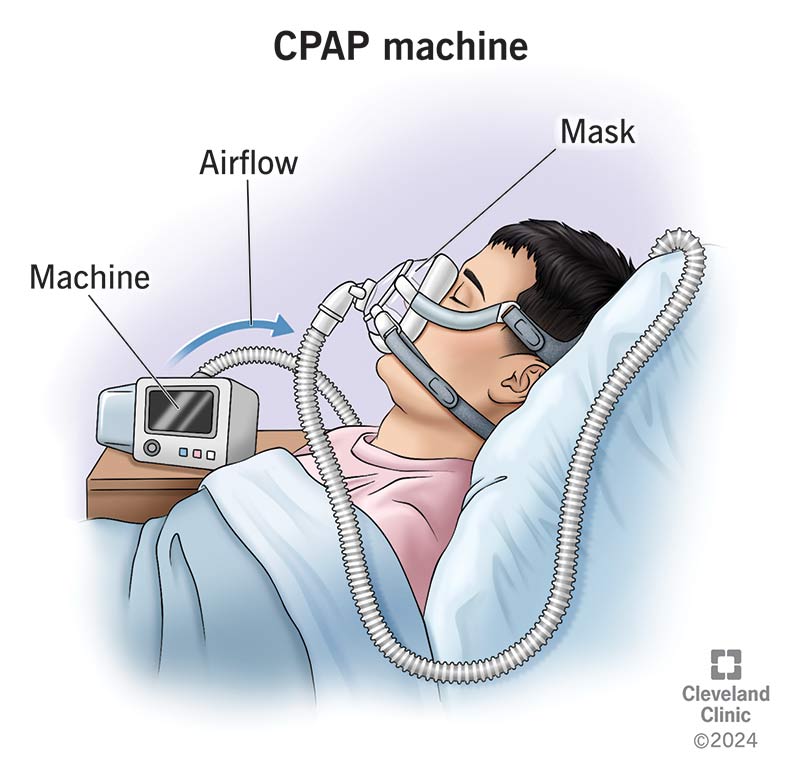
The CPAP works to encourage airflow and prevent blockages in the user’s airways during sleep. This keeps the airways open, allowing the lungs to receive more oxygen. This makes breathing go better during sleep, so sleep apnoea sufferers avoid waking up repeatedly to resume breathing.
Watch this : Understanding Obstructive Sleep Apnoea | Dr Valerie Tay (ENT Specialist)
CPAP Machine Placement and Setup
Determining the right location for the CPAP machine is very important, as this helps you use the machine correctly.
- Select a dry location to avoid damage to the machine due to moisture.
- Ensure that the appliance is easily accessible to a power cord source for use.
- Avoid placing the appliance close to fans or wind sources that may disrupt airflow.
- The CPAP hose must be long enough to go from the machine to your head – keep the CPAP machine close enough to avoid tugging on the hose.
- Ensure the hose can move freely and you can reach for the machine easily. Keep the area surrounding the CPAP machine uncluttered.
Placing the CPAP machine in an area that is too far from the bed may make you feel lazy to use it, so make sure it is within easy reach.
Choosing and Using a CPAP Mask
Choosing an appropriate mask is the first step to ensuring a smooth CPAP therapy.
Here are some types of masks that you can choose from:
| Mask type | Advantages | Disadvantages | Patient profile |
| Nasal Mask
|
|
| For patients who are back and side sleepers |
| Nasal Pillows Delivers air directly to the nostrils
|
|
| For patients with facial hair that interferes with mask placements |
| Full Face (Oronasal) Mask Tubing is at to the front of the mask, which covers nose and mouth
|
|
| For patients who breathe through their mouth at night despite using a nasal mask or nasal pillow For patients who need high pressue settings |
| Hybrid Mask Tubing is at to the front of the mask, which covers nose and mouth
|
|
| For patients who alternate between nose and mouth breathing |
| Oral Mask The mask seals over the mouth
|
|
| For patients who breathe through their mouth at night, as an alternative to full face masks. For patients who have allergies or frequent nasal congestion |
Pictures courtesy of Vitalitymedical.com
Make sure the mask fits tightly but not too tightly. Proper adjustment will help avoid air leaks and improve sleep comfort.
Tips for Choosing Your Mask:
- Try several mask models to find the most comfortable one. Many CPAP providers offer free trials.
- Choose a mask based on your personal factors. For example, if you often sleep with your mouth open, a full face mask may be more suitable. If you keep facial hair, a nasal pillow may be more effective.
- Test and adjust your mask to the right fit. Try moving your head and body like you normally would in your sleep. If the mask moves too much, adjust it such that it can provide a good fit in all angles
An uncomfortable CPAP mask can cause skin irritation or even disrupt sleep. Invest time to find a mask that really works for you.
Read also: The Importance of Sleep
CPAP Accessories
CPAP machines also come wiith accessories that can help you utilise your machine better and make therapy more comfortable.
- Mask Liners: These fabric barriers line the CPAP masks and cushions the face from the silicone material, which may be irritating to the skin.
- Chinstraps: When used with the CPAP mask, a chinstrap helps to keep one’s mouth closed to ensure teh CPAP therapy is effective.
- CPAP Pillows: These special pillows support the head and neck during sleep, without interfering with the CPAP mask. This can be especially useful for side and stomach sleepers.
- Humidifier: CPAP machines may have humidifiers to moisturise the air to reduce dry mouth symptoms.
How To Use Your CPAP Machine
Now you have your CPAP machine in order, you may wonder how to set it up and use it. Just follow these simple steps to get started:
- Place the CPAP machine in an appropriate place. A small table at the bedside is usually optimal.
- Check your CPAP machine filter. For specific instructions, refer to your CPAP machine’s product information.
- Attach the hose to your machine, ensuring a secure fit.
- Attach the hose to the CPAP mask of choice. This usually clicks in place to ensure a secure connection.
- If your CPAP machine has a humidifier, fill it with distilled water. This prevents mineral buildup or impurities. Do not overfill the reservoir to prevent water from entering the hose.
- Plug in the CPAP machine.
- Put on your mask and adjust to fit. The mask should form a tight seal against your face but not pinch your skin.
- Turn on the machine, based on the settings determined by your doctor. At this point, you can chek if the mask is a good fit. Make any adjustments needed.
- Rest! Ensure you are in a position that is comfortable and does not interfere with the mask and hose.
CPAP Machine Care and Hygiene
Keeping your CPAP machine clean and hygienic is important to prevent infections and ensure proper functioning of the machine.
CPAP Machine Maintenance Tips:
- Clean important parts of the CPAP machine weekly, such as the mask and hose, to prevent bacteria build-up.
- Replace the CPAP filter monthly. Dirty air filters can reduce air quality and cause health problems.
Neglecting routine maintenance can shorten the life of the machine and decrease the quality of CPAP therapy.
CPAP Therapy Side Effects
While CPAP therapy offer important health benefits, some people may experience side effects associated with therapy.
Common side effects include:
1. Runny and blocked nose
The CPAP machine sends a continuous flow of air into the nose, for nose pillows, nose masks, and full face masks. This can irritate the lining of the nose and cause nasal congestion.
2. Dry airways
As air from the CPAP passes through the airways, it can dry out the lining of the mouth, nose, and/or throat. A humidifier can help to reduce this side effect.
3. Discomfort when exhaling
There will be resistance when exhaling due to the pressurised air that is pushed out of the CPAP machine. This sensation can be worse for patients who require higher levels of air pressure as prescribed by their doctor.
4. Skin irritation
To be effective, the CPAP mask must form a tight seal against the face. This may cause some discomfort and skin irritation. This can be mitigated with mask liners and proper mask fitting.
5. Dry eyes
For poorly fitted masks, air may leak from around the mask. This air can affect the eyes, drying them out and causing irritation and discomfort.
6. Bloatedness
Some CPAP users may swallow some of the pressurised air delivered by full face masks and oral masks. This can cause bloating and gassiness.
Symptom Evaluation and Follow-up
If old symptoms reappear or you are still snoring despite using CPAP, reach out to your doctor. This may be a sign that the pressure setting needs to be adjusted, or that you are not using the CPAP machine correctly.
Take notes on your sleep patterns and any changes in symptoms, and share this with your doctor during follow-up appointments. Having regular evaluations to ensure the therapy remains effective and suits your needs.
Using a CPAP machine correctly and consistently can help improve sleep quality, increase energy, and reduce the risk of sleep apnoea-related health problems.
By understanding how the CPAP machine works and taking care of it properly, you can get the maximum benefit from this therapy. Hopefully, this information will help you feel more comfortable and confident in using CPAP at home.
Have a good night’s sleep!
Have a pressing question for a doctor? Medical Channel Asia has launched a community forum page where you can get questions answered by a medical specialist. Visit the community forum here.
References
- https://www.sleepapnea.org/cpap/how-to-use-cpap-machine/
- https://www.mayoclinic.org/diseases-conditions/sleep-apnea/in-depth/cpap-masks/art-20546828
- https://www.sleepfoundation.org/cpap/cpap-mask-types
- https://www.sleepapnea.org/cpap/common-side-effects/

